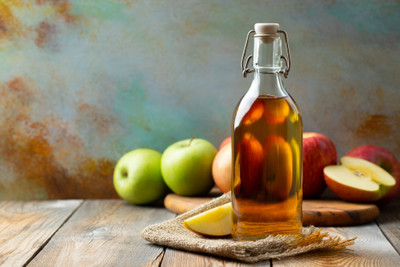A bumper apple crop makes cider a great option
Posted by The Wares Team on 30th Sep 2020
It’s been quite a mixed bag this growing season, with weather that seems to have lurched from one extreme to the other between the start of Spring to where we are now, with Autumn fast approaching. When lockdown was first announced, staying at home all the time didn’t seem much like a chore because the entire country enjoyed weeks of uninterrupted sunshine and unseasonably good weather.
Typically, when lockdown
restrictions were eased and people started thinking about ‘staycations’
and getting out and about a bit more, most of the country was then
treated to a month of heavy rain and strong winds. Now, as the Summer
draws to a close, we keep hoping for an Indian Summer with some
consistently good weather, but things seem to be changing on a frequent
basis. All of this somewhat peculiar weather has had an effect on our
gardens - sometimes for the good, and sometimes not so. One winner this
year seems to be apple trees. Record crops are reported up and down the
country.
If you have apple trees in your garden, or you’ve been
gifted apples from friends and family who have more apples than they
know what to do with, it’s time to get creative and decide how to use
all of that lovely produce. In today’s blog post, we consider making
homemade cider - it’s easy to do and is ready to drink in no time at
all. So grab some glass bottles and let’s get making!
Choosing your glass bottles
The ideal glass bottles for cider making are those that come with swing
tops as these will ensure that the tops don’t come off with the pressure
that builds up if you add any fizz to your ciders. Take a look at our
glass bottles online to ensure that you have enough to hand when it
comes to decanting from your demijohns. If you are planning to make
anything like apple butter or apple and blackberry jam, then you might
want to look at our glass jars at the same time, to ensure that you are
fully stocked.
The basics of cider making
When we talk
about making cider, most people assume that we mean alcoholic cider,
which is often referred to as ‘hard’ cider, rather than apple cider,
which is non-alcoholic, and used to make things like apple cider vinegar
and pressed apple juice.
To make your own cider, you will need
to follow a few simple steps. Firstly, you need to clean your apples and
then press them to extract the juice. An apple press is the easiest way
to do this, and these can be purchased online, or you could ask around
to see if any of your friends or neighbours have one that you could
borrow for a day.
Once the juice has been extracted and
strained, you should add Campden tablets to remove any harmful bacteria
from the juice, prior to starting the fermentation process. Leave for 24
hours and then add yeast. Different yeasts are available to produce
different styles of cider, but champagne yeast is commonly used as a
good all-round cider yeast.
Pour the juice into clean,
sterilised demijohns and fit with airlocks that have had cold water
added to them, so that the air bubbles can be seen to bubble through. A
warm room will start the fermentation process off more quickly than a
cool environment, but either way, you will soon notice that the air
bubbles are starting to pass through the airlock, which means that
fermentation is underway. Keep an eye on your demijohns over the next
few weeks, to ensure that air bubbles are still passing through the
airlock. After about 4 weeks, the fermentation will stop, and there will
be no more bubbles forming in the airlocks.
Once your cider has
completed the fermentation stage, you can bottle it whenever you are
ready. We recommend using clean, sterilised glass bottles for this, with
swing tops or screw caps. If you want your cider to have some fizz to
it, add a teaspoon of sugar to each bottle before you seal the bottles.
And while you can drink your cider pretty much as soon as it has been
bottled, you’ll find that it most definitely improves with a little age,
so try to leave it for a few months if you can - if temptation doesn’t
get the better of you!
As well as cider, there are of course
many other ways to use up your apple harvest. Why not try making apple
butter, or dehydrating apple slices in a warm oven or a dehydrator, for
tasty snacks that can be stored in glass jars for months?
Have
you started to process your apples for this season? What recipes and
ideas are you trying this year? Do share your adventures with us on
social media - just get in touch on Facebook, Instagram or Twitter, as
we love to hear from you all!

